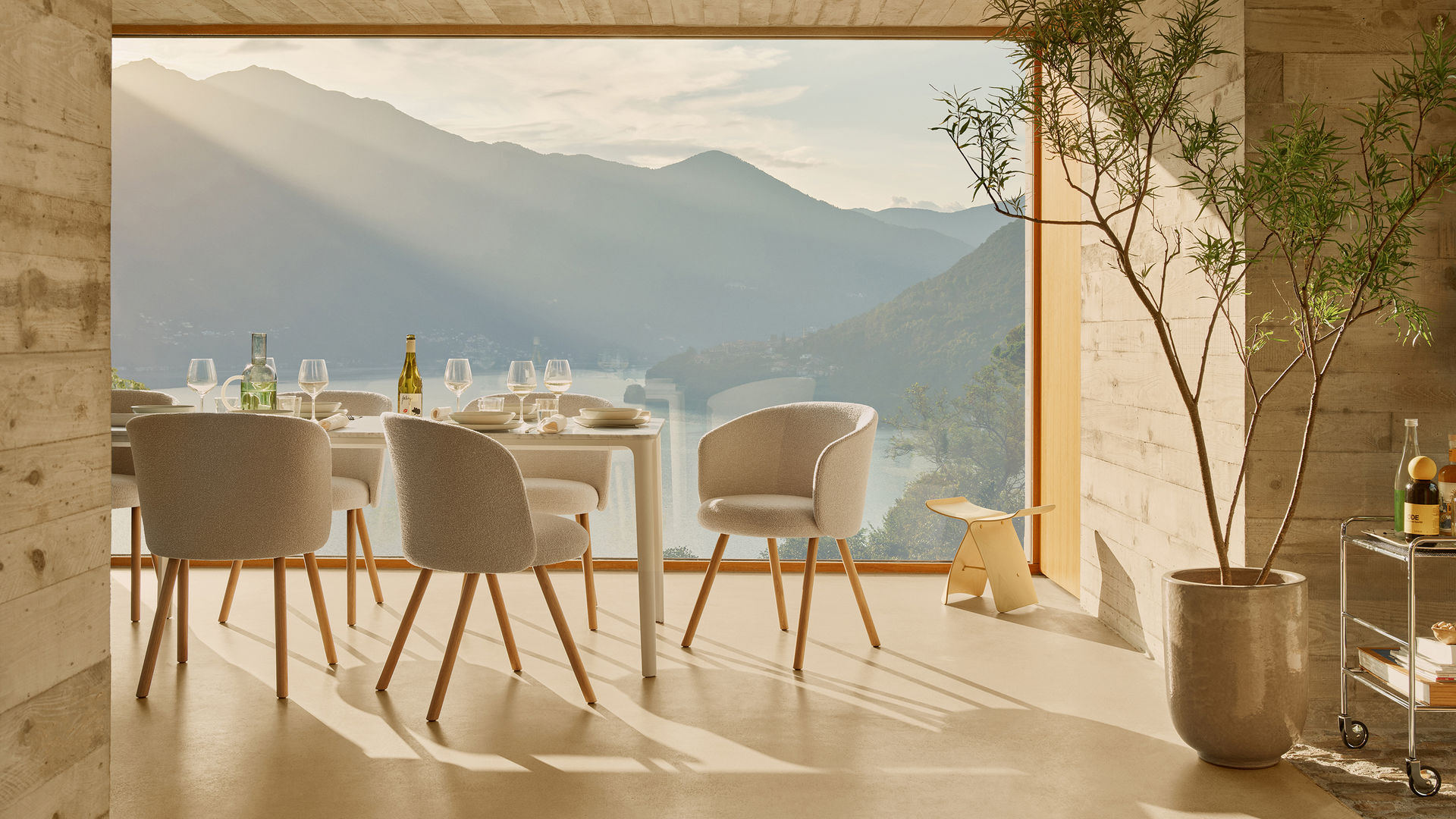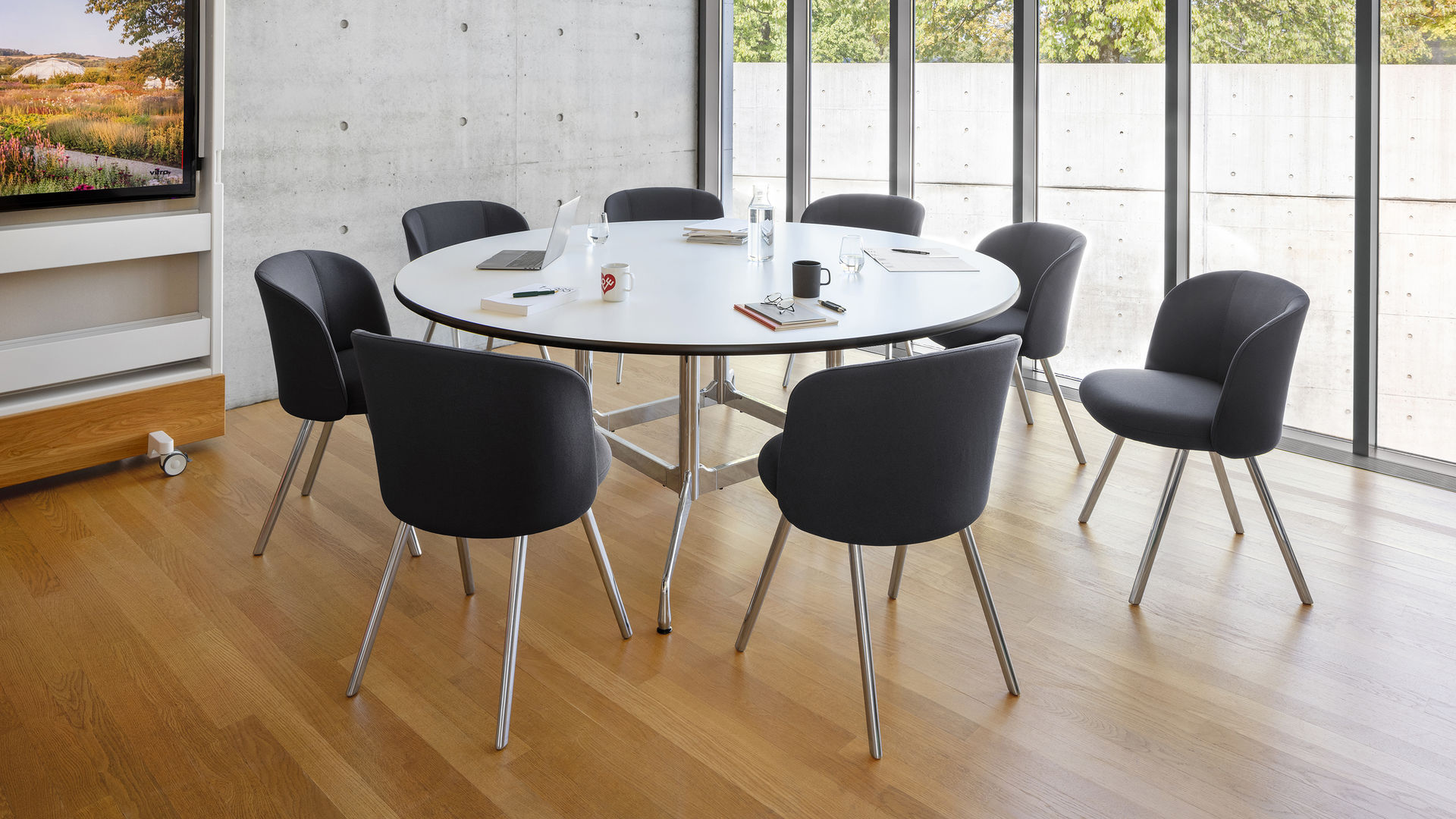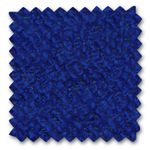
Mikado Side Chair
Edward Barber & Jay Osgerby, 2024
Mikado is available as an armchair or as a side chair. The sides of the rounded backrest do not extend as far forward on the Mikado Side Chair as on the armchair version.
The covers of the Mikado chair are not glued and can be removed for cleaning or replacement. The legs may be replaced individually or exchanged for a different material option – wood or recycled aluminium. The inner seat panel is made of recycled aluminium while the core of the backrest shell is produced from recycled polypropylene, which can be easily separated from the foam padding during recycling. The concept of a simple exchange of components gives Mikado long-term versatility, thereby ensuring longevity.
Information
- Backrest and seat: flexible backrest, back shell in recycled post-consumer polypropylene, seat and backrest upholstery in recyclable polyurethane foam V-Foam.
- Inner seat panel: die-cast aluminium.
- Seat height: 505 mm (440 mm with applied load, measured in accordance with EN 1335-1:2000).
- Four-legged base: non-stackable, wooden base in natural oak or dark oak or aluminium base with powder-coated or polished finish; replacement by trained professionals only.
- Five-star swivel base: height-adjustable, aluminium with polished finish or powder-coated in basic dark; equipped with double castors (Ø 60 mm).
- Four-star swivel base: aluminium with polished finish or powder-coated in basic dark, on glides in accordance with EN 16139.
- Seat substructure: aluminium inner seat panel and aluminium support bridge for the pedestal base always powder-coated in basic dark.
- Cover: not glued, in fabric or leather with two seams along the sides of the backrest; replacement by trained professionals only.
- Note: none of the components are glued and they can all be separated according to material for recycling.
- Origin of wood: oak (Quercus robur) from the Czech Republic.
10 year manufacturer’s warranty for selected products
Mikado




Mikado is a chair with a serene yet commanding aura that aims to impress not only by its form but also through unparalleled comfort – whether used around home dining tables, in restaurants or for meeting rooms. The Mikado seating experience is defined by upholstery on all sides as well as the dynamic movement of the backrest. An ingeniously simple mechanism concealed beneath the seat allows the back to move with the sitter and recline at a slight angle. Mikado was designed with sustainability in mind from the outset: the covers are not glued and can be removed for cleaning or replacement. The legs of the four-legged base may be replaced individually or exchanged for a different material option – wood or recycled aluminium. The five-star base with castors and the four-star base are also made from recycled aluminium and can be exchanged or replaced as required. The inner seat panel is made of aluminium with a high recycled content, and the backrest shell is produced from recycled post-consumer polypropylene, which can be easily separated from the foam padding during recycling. The concept of a simple exchange of components gives Mikado long-term versatility, thereby ensuring longevity. Mikado is available as an armchair with the suggestion of armrests or as a side chair, which each offer a distinctive seating experience and yet are so similar that they can be combined without disturbing the visual harmony around a table or within a given space. Different legs, two backrests, a choice of fabric or leather covers and numerous colours afford a wide variety of possible combinations.
Edward Barber & Jay Osgerby






Edward Barber and Jay Osgerby studied architecture as fellow students at the Royal College of Art in London. Since that time, their collaborative work has probed the interface between industrial design, furniture design and architecture.



















































































































